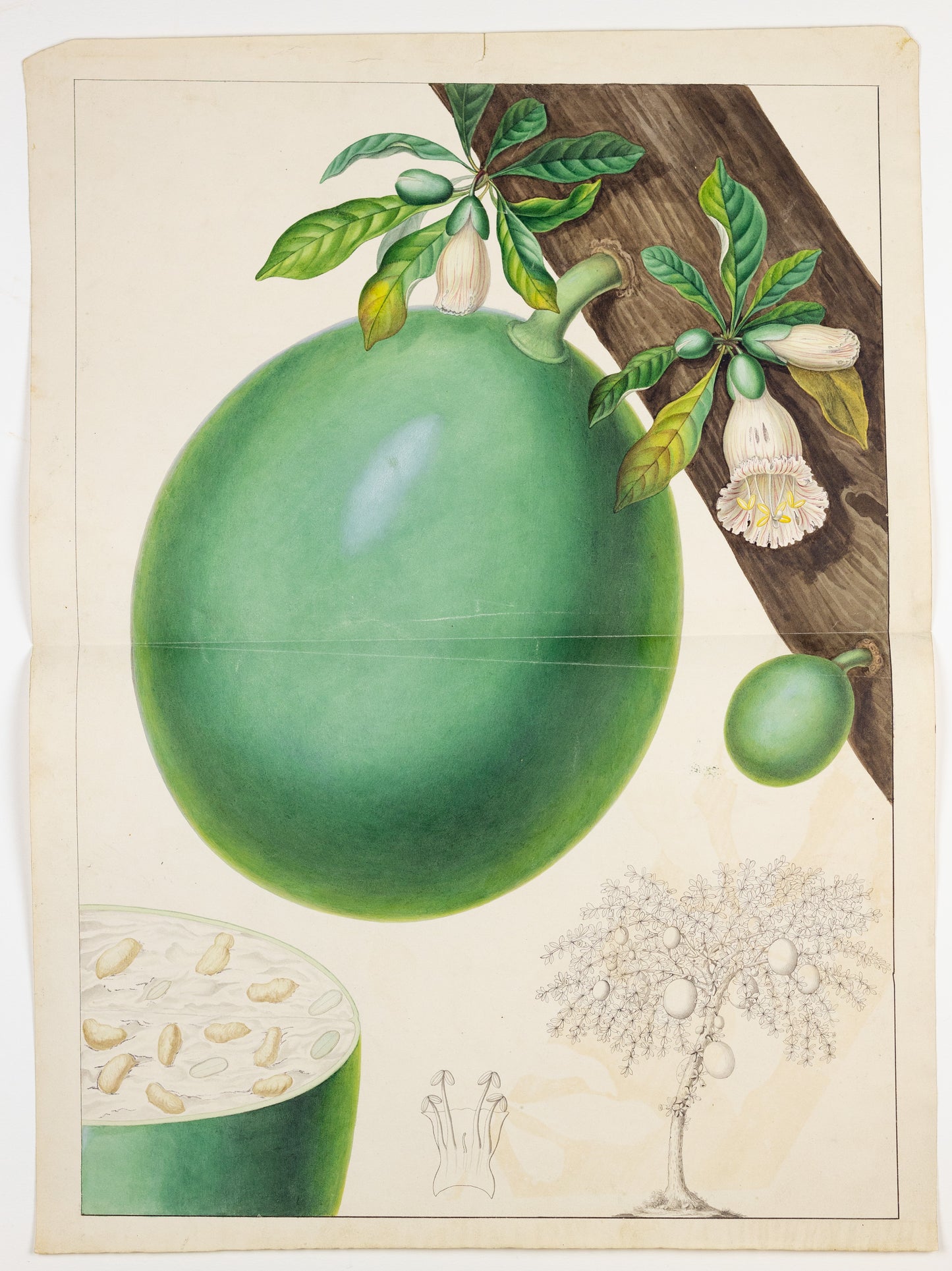from: Poiteau & Turpin Superb Botanical Drawings including varieties from the West Indies
PIERRE JEAN FRANÇOIS TURPIN (FRENCH, 1775–1840). The Larger Calabash Tree. 1808–1827.
PIERRE JEAN FRANÇOIS TURPIN (FRENCH, 1775–1840). The Larger Calabash Tree. 1808–1827.
Couldn't load pickup availability
PIERRE JEAN FRANÇOIS TURPIN
(FRENCH, 1775–1840)
“Crescentia cujete Calebassier franc”
[The Larger Calabash Tree]
Preparatory drawing for F.R. Tussac. Flore des Antilles, ou histoire générale botanique, rurale et économique des végétaux indigènes des Antilles.
Paris: chez l’auteur, F. Schoell et Hautel, 1808–1827. Vol. 2, Pl. 19
Watercolor and pencil on paper
Paper size approx: 16 1/8 x 22 in.
Frame size: 31 1/8 x 24 1/4 in.
Tussac wrote that this gourd was so large that when it was emptied of seeds, it could help carry water. Some locals used the gourds as vessels to store liquids, including liquor. The author compares the wood’s hardiness to mahogany, which native people shaped into vases, furniture, plates, and utensils. The Calabash tree grows to great heights which made for a great lookout point.
Tussac wrote:
“I observed in a garden of Port-au-Prince in Santo Domingo, a tree of such considerable size and height, that a room had been made in the center of its top which could contain twenty people; we went up there by a staircase of forty steps. When the English seized Port-au-Prince, they did not fail to post a sentry in this, which dominated part of the city and its surroundings and which also served as a lookout to discover the vessels that presented themselves to enter the harbor.”
Appeared in F.R. Tussac. Flore des Antilles, ou histoire générale botanique, rurale et économique des végétaux indigènes des Antilles.
Paris: chez l’auteur, F. Schoell et Hautel, 1808–1827. Vol. 2, Pl.



